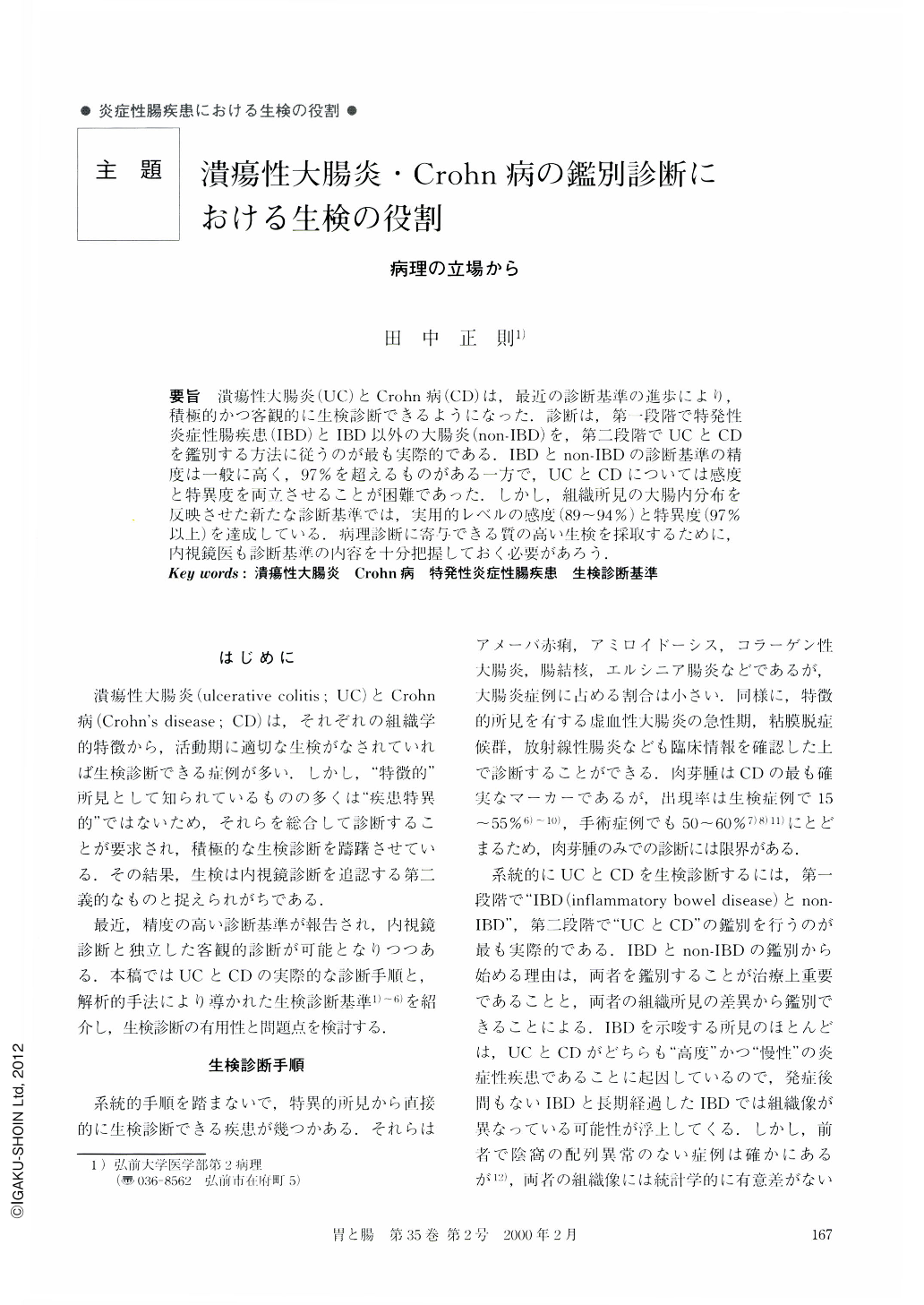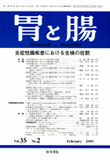Japanese
English
- 有料閲覧
- Abstract 文献概要
- 1ページ目 Look Inside
- サイト内被引用 Cited by
要旨 潰瘍性大腸炎(UC)とCrohn病(CD)は,最近の診断基準の進歩により,積極的かつ客観的に生検診断できるようになった.診断は,第一段階で特発性炎症性腸疾患(IBD)とIBD以外の大腸炎(non-IBD)を,第二段階でUCとCDを鑑別する方法に従うのが最も実際的である.IBDとnon-IBDの診断基準の精度は一般に高く,97%を超えるものがある一方で,UCとCDについては感度と特異度を両立させることが困難であった.しかし,組織所見の大腸内分布を反映させた新たな診断基準では,実用的レベルの感度(89~94%)と特異度(97%以上)を達成している.病理診断に寄与できる質の高い生検を採取するために,内視鏡医も診断基準の内容を十分把握しておく必要があろう.
Colorectal biopsy is useful in the diagnosing of patients with colitis, in whom it is most important to make a differential diagnosis between idiopathic inflammatory bowel disease (IBD) and other forms of colitis (non-IBD) and between ulcerative colitis (UC and Crohn's disease (CD). Sometimes this diagnosis is controversial. Published criteria for IBD and non-IBD had a high diagnostic validity exceeding 97%, but high sensitivity and specificity were incompatible in differentiating between UC and CD. This difficulty was recently overcome by using histological features representing a colorectal distribution of the underlying disease. New criteria for UC and CD enabled high specificity exceeding 97%, and their sensitivities were 89% and 94%, respectively. More accurate biopsy diagnosis is now possible, and endoscopists need to understand the content of the criteria in order to take biopsy specimens appropriately.

Copyright © 2000, Igaku-Shoin Ltd. All rights reserved.


